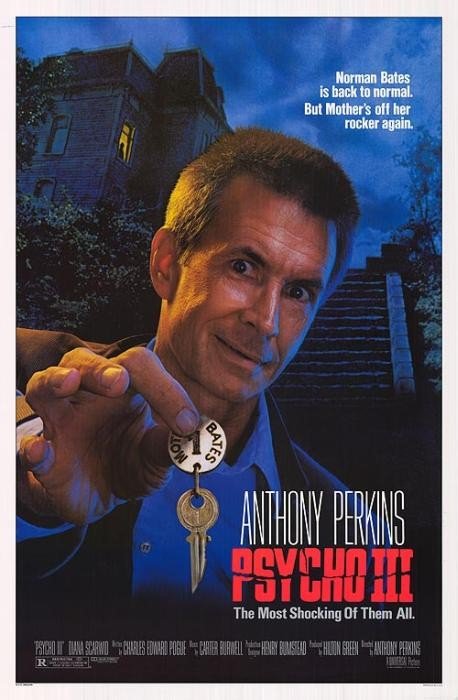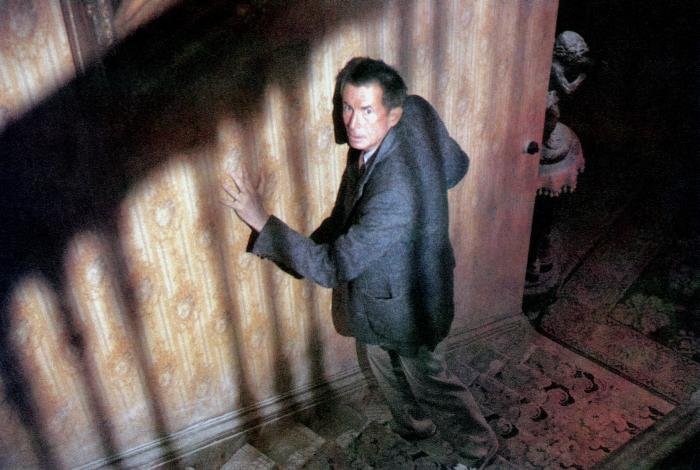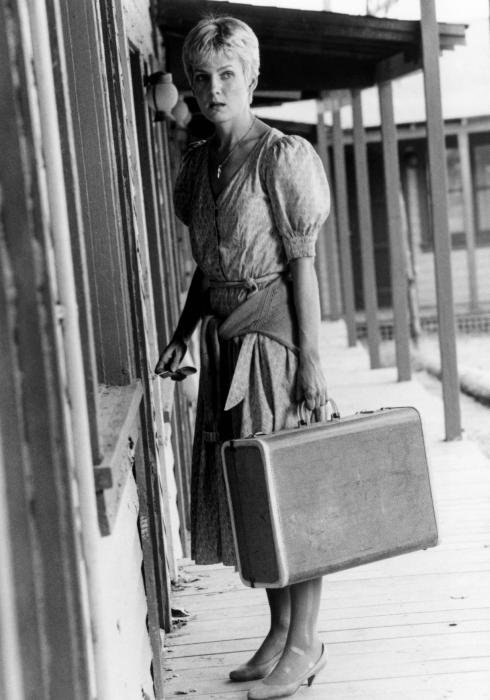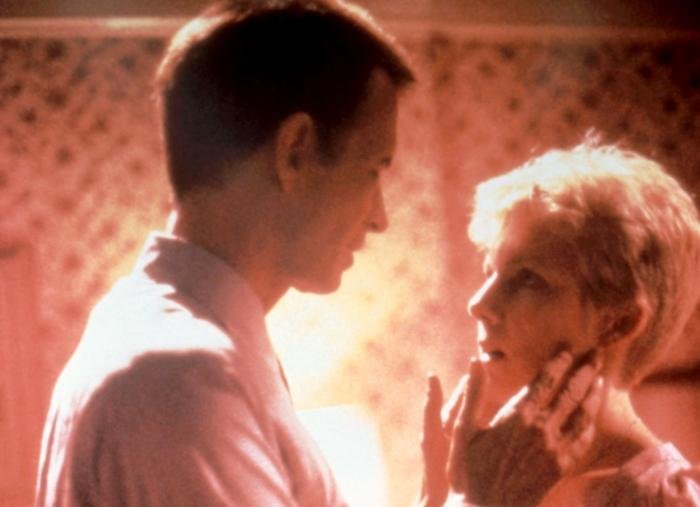PSYCHO III: Norman Bates Goes For Baroque
Psycho II was amongst horror cinema's more unexpected sequels but its success (and its open ending) made Psycho III a foregone conclusion. When it arrived in 1986, Psycho III found Anthony Perkins doing double duty as star and director, presiding over a mixture of the familiar and the daring. The results aren't as conceptually and stylistically airtight as Psycho II - but it is a diverting and worthwhile effort that finds old Norman Bates learning a few new tricks. It also takes a few bold changes in both subject matter and style.
At the top of the story, Norman Bates (Perkins) is free once again and hopelessly insane. The Bates Motel is languishing but three new arrivals are going to fire up the hotel and Norman once again. The first is Maureen Coyle (Diana Scarwid), a woman who fled from a convent under tragic circumstances before taking her vows. As she grapples with suicidal urges, she awakens both murderous cravings and romantic interest in Norman.
There is also a new assistant manager Duke (Jeff Fahey), a sleazy aspiring musician who starts looking for ways to take advantage of Norman after learning about his past. The final addition is reporter Tracy Venable (Roberta Maxwell), who is convinced that Norman isn't innocent like the local law believes - and is determined to dig up the homicidal dirt on him. Someone  as fragile as Norman can only keep it together so long in such a pressure cooker - and the fight for control between "Mother" and himself will ensure there is a pile of corpses before the story ends.
as fragile as Norman can only keep it together so long in such a pressure cooker - and the fight for control between "Mother" and himself will ensure there is a pile of corpses before the story ends.
Psycho III isn't afraid to try new things with a familiar format. The densely plotted script by Charles Edward Pogue juggles plot threads from the first two Psycho films while also adding twists to that mythology and introducing a number of new characters that often get as much time as Norman. It also takes on a tricky tone that blends in a hefty amount of  black comedy into the film while still treating the stories of Norman and Maureen with a sense of tragic drama.
black comedy into the film while still treating the stories of Norman and Maureen with a sense of tragic drama.
That blend of tones is supported by Perkins' direction, which is visually impressive for a first-time director. As you might expect, he does a few Hitchcock quotes in spots: the opening sequence emulates a key moment in Vertigo and one death scene is modeled on a killing from the first Psycho. However, he also expands the visual palette of the Psycho film in unusual ways, utilizing some bold camera moves and splashes of primary-colored lighting. In fact, during some of the murder sequences, you might feel like you're watching an Italian horror film.
It's also worth mentioning that the director brings sex into Psycho III in a way that the other films in the Psycho trilogy do not. This mainly happens through the plot thread involving Duke, who chases anything in a skirt. Perkins had worked with Ken Russell on Crimes Of Passion a short while before Psycho III and the sexier scenes reflect that influence to a certain degree, particula rly a seduction scene that involves a unique use of motel lamps. Repressed sexuality is a major concern in this film (as it is all Psycho films) and the clash between Duke's lascivious nature and Norman's buttoned-down sensibility - plus Norman being tempted more than ever by Maureen - adds a new kind of spice to the proceedings.
rly a seduction scene that involves a unique use of motel lamps. Repressed sexuality is a major concern in this film (as it is all Psycho films) and the clash between Duke's lascivious nature and Norman's buttoned-down sensibility - plus Norman being tempted more than ever by Maureen - adds a new kind of spice to the proceedings.
Finally, Perkins is very good with his cast and generous enough as an actor and a director to give their performances plenty of room. In fact, this is almost an ensemble piece. The tone of the acting is more melodramatic than the previous films but it works given the film's baroque sensibility. Scarwid in particular shines in this setting: she's always had a skill for florid melodramatics (Mommie Dearest, anyone?) and she tackles the big emotions her character demands with admirable devotion. Fahey offsets a lot of the other performances with a sly blend of sleazy charm and quietly sociopathic menace. Perkins sets the ton e for the film with his mixture of gothic theatrics and underplayed humor - and he also had the good eye to cast some sexy 80's-exploitation starlets like Juliette Cummins and Katt Shea in the smaller roles.
e for the film with his mixture of gothic theatrics and underplayed humor - and he also had the good eye to cast some sexy 80's-exploitation starlets like Juliette Cummins and Katt Shea in the smaller roles.
In short, Psycho III carves out its own place in the theatrical trilogy of Psycho films: it's a little weirder, broader in dramatic style and full of quirky touches that will appeal to true-blooded horror fans. If there's a complaint to be made, it's that it tries do a little too much, leading to a rushed denouement and some tonal shifts that will give less adventurous viewers whiplash. That said, it deserves praise for doing the unexpected in what could have been just another sequel - and its unusual style will appeal to horror buffs who enjoy the quirkier side of the genre.


